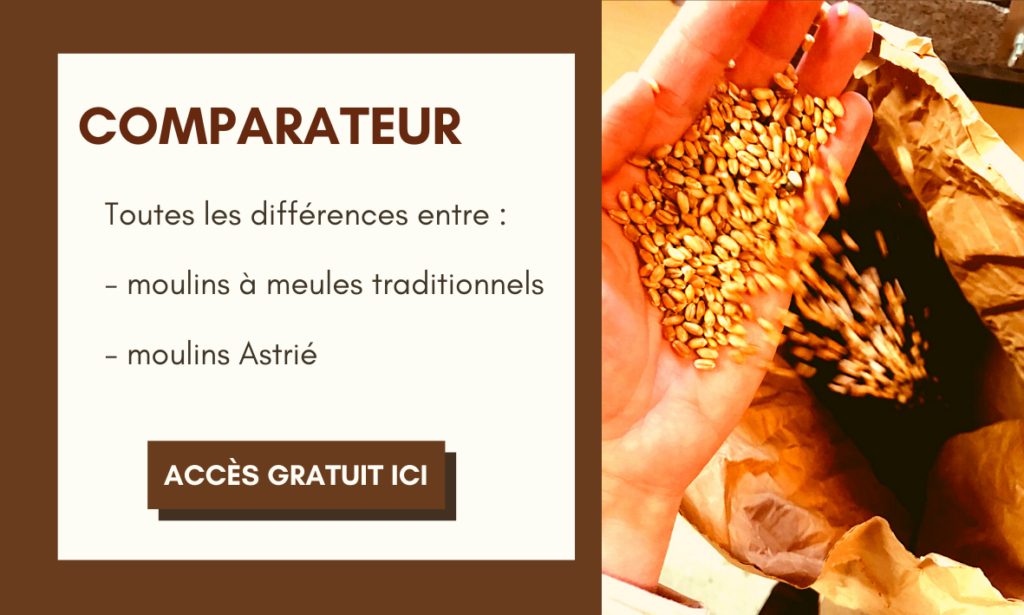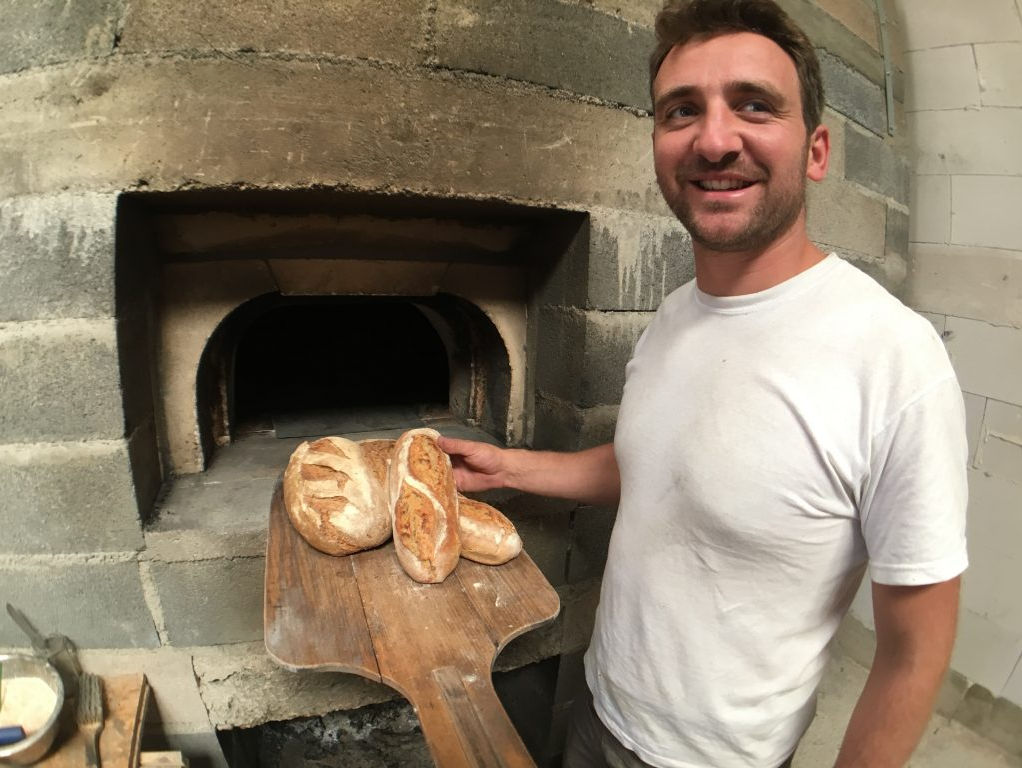Are you a baker or cereal grower looking for ways to improve your business? It’s high time you made a commitment to an approach that respects both the environment and the health of your customers… The slow food movement can really support you and help you boost your business… But what is it really all about? What can this movement do for you? How does it benefit consumers?

What is slow food?
If we want to get to grips with the fundamentals of slow food and reach the hearts of consumers, let’s start by trying to understand what sparked off this wonderful movement!
Launched by Carlo Petrini, slow food is a movement that can be described as ‘eco-gastronomic’. The idea is to restore responsible eating to its rightful place in society, something that has suffered so much in recent years.
Fast food, industrial food, toxic substances, additives, colourings… There are many obstacles to healthy eating for consumers. So slow food is stepping in to restore the value of food.
To achieve this, the movement is focusing on a number of areas.
Eating while respecting nature and biodiversity.
The first principle to follow here is to value seasonal food. The slow food movement encourages consumers to think about the impact that food has on the planet. And obviously, eating tomatoes in winter, which have travelled thousands of kilometres before reaching your plate, doesn’t fit in with the ecological principles defended by the slow food movement.
But in order to eat while respecting nature, the second principle to respect is to take care of the earth by using as few pesticides as possible. To this end, consumers will prefer organic products, or those from producers who practise sustainable agriculture. The aim of sustainable agriculture is to strike the right balance between production and respect for the environment. A good start to offering eco-responsible products!
In our very personal conception, we go much further, since our organic land is also pesticide-free!
Promoting local products
Slow food promotes local, regional products. To achieve this, consumers turn to short distribution channels, and try as far as possible to buy directly from the producer. They only eat what grows close to home, thus limiting their impact on the environment and promoting the know-how of local farmers. He looks for authentic food, rooted in tradition, that brings out flavours he won’t find elsewhere. And it has to be said that in this respect, France is pretty well off the mark!
Promoting unprocessed products
The slow food movement values unprocessed products. Industrial foods, those of which we don’t really know what they’re made from, have no place in the responsible consumer‘s basket! The origin and quality of each ingredient is important. For products that take care of consumers’ health, there’s only one watchword: transparency.
Opt for slow food to help your business evolve: 3 areas to develop
To succeed in putting slow food at the heart of the way you offer your food to customers, you need to act on several levers.
Promote your region
Slow food is a real opportunity for the farmer-baker to put the terroir that is so important to him at the heart of his work. Since customers want to eat what is close to them, you can start by carefully selecting the cereals that best showcase your heritage.
The strategy is to opt for ancient cereal varieties. These have unjustly disappeared from the fields for productivity reasons… The first step is to bring tradition up to date, turn to sustainable production and boost the nutritional value of your food.
Small spelt contains 8 essential amino acids for the body. It is rich in minerals and helps you produce a golden bread with a light nutty flavour. Rich in carotenoids, small spelt is a perfect dietary ally that will add value to all your products.
Rye can also be a part of the slow food movement. Rich in vitamins, minerals and dietary fibre, this cereal adds a rustic touch to bread and biscuits. It adds a slightly spicy flavour to your products, and helps control blood sugar levels.
Barley can also find a place in your slow food products! Ideal for the digestive system, this cereal is rich in soluble fibre, antioxidants, iron, zinc, copper, phosphorus and magnesium.
Great spelt, millet and buckwheat are also particularly interesting cereals ‘nutritionally’, and are sure to provide your shop’s products with all the diversification they need. So, if you want to be sure of winning over consumers with slow food, it’s time to start growing varieties of ancient cereals!
Use the right equipment to process cereals in the best possible way
The problem of traditional mills
No slow food without good equipment. And as a farmer-baker, if there’s one stage you need to pay particular attention to, it’s turning your cereals into flour.
And the stakes are no less high! If you’ve taken great care to choose the best cereals, and to grow them in a way that respects the environment and consumer health, it would be a shame to spoil everything by turning them into poor-quality flour… Because, alas, it is possible. By choosing a roller mill, for example, which rotates too fast, the mechanism oxidises the grain. And the result on your cereals is more than disappointing: you produce white flour with little nutritional quality.
Choosing a quality mill
To make up for this, choose your mill carefully: the Astrié mill transforms your cereals in a more respectful way. It helps you to produce a high-quality, authentic, local flour with a strong flavour.

And here’s how it works: unlike the mills mentioned above, the Astrié mill takes care not to crush your cereals. Instead, it unrolls them, without oxidising them, giving life to unrefined flour: in fact, with an extraction rate of 80% in a single pass, the flour is neither heated nor oxidised.
The micrometric adjustment between the two grindstones made from Sidorbe granite allows you to preserve absolutely all the interesting parts of the seed (including the germ), which contain all the nutrients: vitamin E, vitamins B1, B2, B3, B5, B6 and B9, minerals such as phosphorus, zinc, magnesium, manganese, iron, potassium, copper, fibre (which makes food much more digestible) and protein.
When it comes to producing quality doughs, biscuits and breads, it’s the flour that makes all the difference. With the Astrié mill, you can produce the type of flour you need, and that your customers really want. The sieve in the sieve box can be replaced depending on the flour you want to produce: T110, T80, etc. If you want to respect the principles of slow food and obtain a high-quality, nutritious, easily digestible wholemeal or semi-complete flour made from the cereals of your choice, you need an Astrié mill!
To be a profitable farmer-baker, this is a key success factor.
Limit the products offered to customers
You’ve carefully selected the cereals that will showcase your terroir and you know how to process them with care. To respect one of the foundations of slow food, which takes care of the health of consumers, take care to use this nutritional flour correctly to create authentic products.
The idea is not to expand your product range by offering as many recipes as possible. The idea is to choose few recipes, but to optimise their quality. Focus on simple but nutritious ingredients, and as far as possible avoid using foods that are not directly from your own production.
For example, offering a wholemeal bread with tomatoes and olives could do you harm, for two reasons:
- because these are summer ingredients, which consumers in search of slow food don’t want on their plates all year round
- because producing these ingredients requires a lot of work, and if you’re looking for a supplier to supply you, the principle of transparency starts to blur for the consumer.

Here you are! To grow your business and find new customers, the slow food strategy can be a real winner! The idea is to offer direct sales at your place of production, so as to create a real bond of trust with your prospective customers. By offering them a method of farming that respects the environment, rare and nutritious cereals that you process with care to give life to healthy products, you’ll be successfully making slow food your own! Ready to get started?


